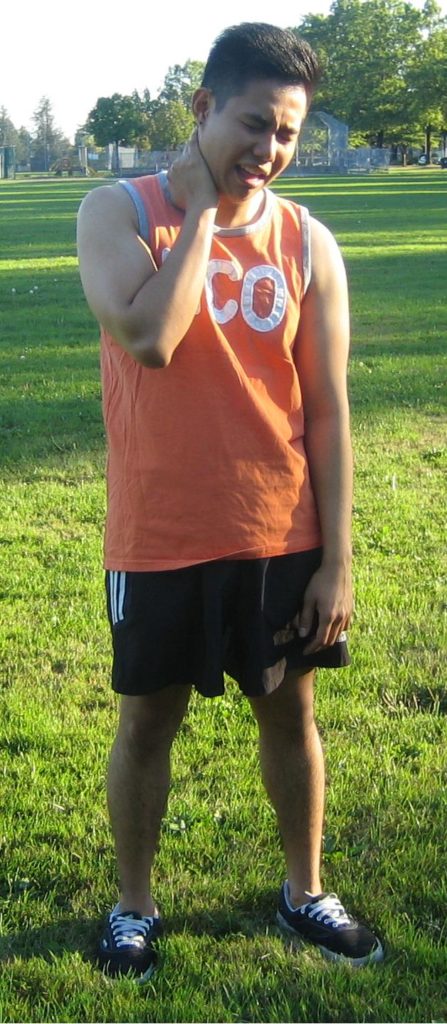Neck strain is a condition where the pain is felt at the back of the neck usually caused by poor posture. Neck strain can be very annoying and could give limited head movements which may disrupt basic tasks and your daily routine. Nearly all cases of neck strains are mild or moderate and eventually heal on its own after a few days but there are cases where neck strain can be troublesome and inconvenient.
Common signs and symptoms of neck strain
- Pain localized to the neck region, especially at the back of the neck
- Achy or throbbing pain
- Pain that worsens with movement
- Muscle spasm
- Stiff neck
Oftentimes, a neck strain can occur with another injury or condition, which may cause additional signs to manifest.

While most neck strains will go away on their own after a few days, healing cannot take place if the muscle is regularly reinjured. This is common when the cause of neck strain is not diagnosed. In case the discomfort is caused due to poor posture or repeated motions that can lead to a neck strain, it is recommended to allow the neck to rest and either limit or change the previous activities that involved prolonged periods of poor posture.
Additional symptoms
- Pain, tingling or numbness and weakness that moves down into the shoulder, arm, or hand
- Painful headaches or dizziness
- Visual impairment or problems
- Increased sensitivity to bright lights
- Neck unsteadiness
- Issues with finger dexterity
- Difficulty in balancing
- Loss of bowel or bladder control
During diagnosis, your doctor will perform a physical examination and question you on what caused the neck strain and how severe the accident was. Your doctor will also ask you for your medical history to reveal if any underlying medical condition caused or contributed to the neck strain. An x-ray scan may also be performed to determine if there are damages to your bones and see how far the damages extend to. An MRI scan may also be performed to see the damages to soft tissues such as muscles or tendons.
Categories
- Grade I: mild strain that only affects a few muscle fibers. Pain is accompanied but no muscle weakness whatsoever.
- Grade II: moderate strain where several muscle fibers are affected accompanied by some muscular weakness.
- Grade III: severe strain where the muscle is fully ripped and is accompanied by severe pain.
Most cases of neck strains are Grade I or Grade II. If a Grade III neck strain occurred, it is most likely that there is also a serious injury to the cervical spine and is no longer regarded as a neck strain injury.
Disclaimer / More Information
The material posted on this page on a neck strain is for learning purposes only. Learn to recognize the signs and how it is managed by taking a first aid and CPR class with one of our training providers.
FACT CHECK
https://www.webmd.com/back-pain/neck-strain-whiplash#1
https://www.emedicinehealth.com/neck_strain/article_em.htm
https://www.spine-health.com/conditions/neck-pain/neck-strain-causes-and-remedies

